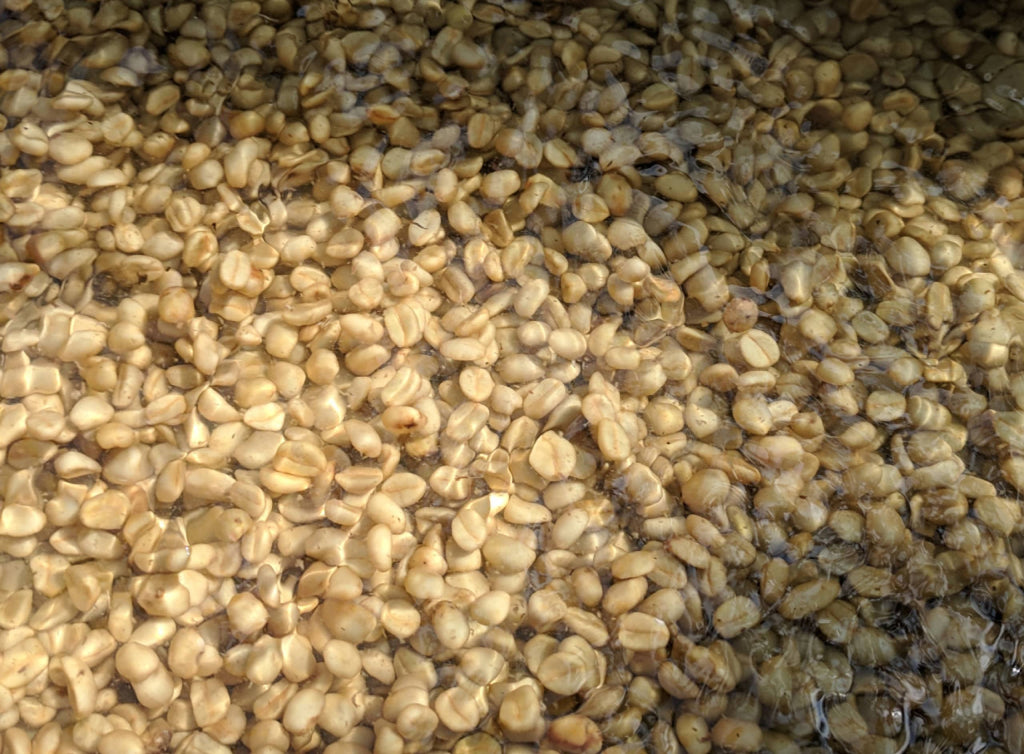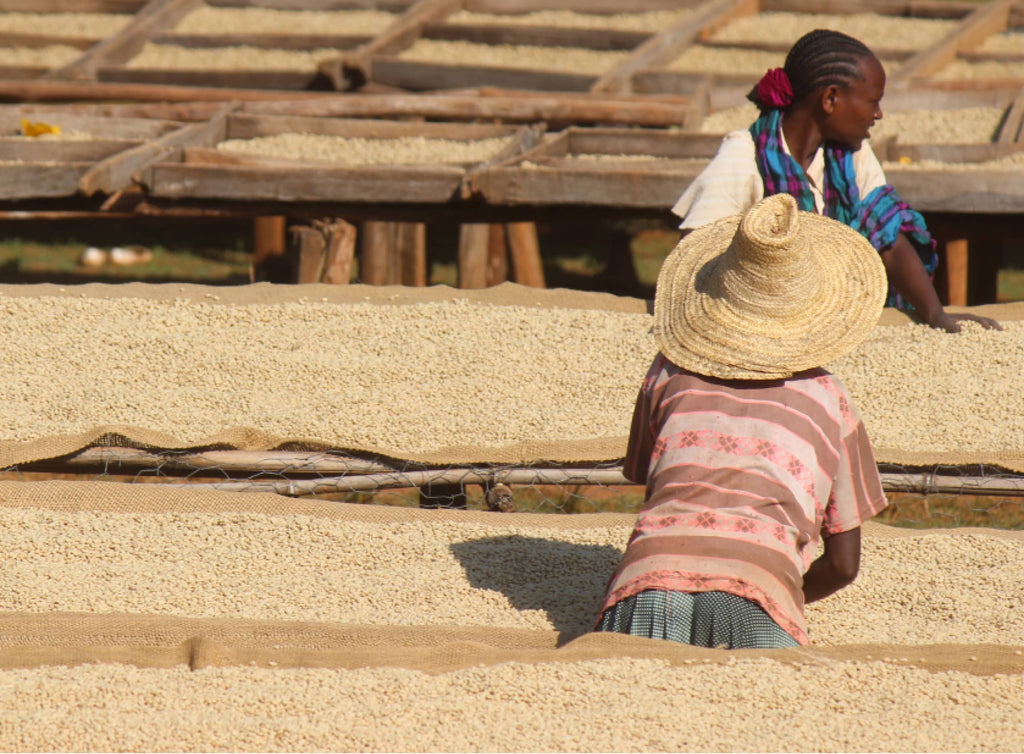What Is Coffee Processing?
Because coffee beans grow inside of a fruit that grows on trees, there are several steps involved before we get to extracting the actual coffee seed that we roast, grind, brew, and drink.
Coffee fruit grows on bushes, often called “trees.” After the fruit from the coffee trees is harvested, the cherries have to be processed. As we mentioned, that means removing the skin and pulp from the seed. There are two main ways to do this washing and natural sun drying. That’s why you’ll see coffees referred to as “washed” or “natural sundried.”

Is One Process Better?
Some people say that the “natural process” is better because it is more “natural.” Or that “washed coffee” is better because it’s “cleaner.” These are misinterpretations of the language being used to describe the processing.
The term “natural” simply means that there’s no water or machines used to remove the fruit from the seed. The coffee dries “naturally,” out in the sun and air with the fruit still on it. “Washed” refers to water being used to help remove the fruit before drying, but this does not make the coffee any cleaner or includes anything “unnatural.”
Both processes produce beautiful coffees, and neither is better or worse than the other in terms of safety or health benefits.
The Natural Sundried Process

Natural sundried, also called “natural process” or “dry process,” means drying coffee cherries whole without the intervention of water or machines to remove any of the fruit. Prior to drying, the cherries are picked, floated in water, and sorted to remove any under-ripe or overripe fruit. The coffee is then laid out on patios or raised beds. Raised beds are preferred because they increase the airflow around the whole fruit to enable more even drying.

To prevent spoiling, the fruit is steadily moved. It is raked and turned throughout the day. This also prevents bruising on the fruit where it’s in contact with the patio or tarp on which it’s resting. Producers are vigilant about avoiding bruising because it can cause flavor defects. The drying process normally takes three to six weeks.
After the cherries have been thoroughly dried, they’re sent to mills for hulling. That means the separation of the seeds from the rest of the dried fruit. Hulling is the last step before dry milling (removal of the seed’s skin) and shipment to the importer or roaster.

The natural process is considered a more traditional method of processing. It originated in locations with limited access to clean water, and it works best in places with low humidity and infrequent rain, like Yemen or Ethiopia. Today, farmers and mills will sometimes choose this process because they and their buying partners are excited about the flavor possibilities it yields. More on that later. For now, we’ll turn to discussing the washed process, which is much more common in current times.
The Washed Process

The second process is referred to as the “washed” or “wet” process. In this method, the fruit is removed from the seed as soon as possible after picking, before the drying process begins. The cherries are floated and sorted to ensure consistent ripeness levels, before being run through depulpers—machines that squeeze the fruit between rollers until the seeds pop out.

Once the seeds are removed from their skins, they’re typically moved into fermentation tanks to remove the mucilage—the remaining sticky sugar and fruit remnants. Through fermentation, microbes and yeast are used to break down the mucilage. The seeds are then washed with water to remove the mucilage from the seeds. Alternatively, a producer can use a machine-assisted process to scrub most of the mucilage from the seed through friction.
After the seeds are washed, they’re dried in the sun on patios, raised beds, or in machines. When they reach the correct moisture level, they are ready to be stored, dry milled, and shipped to the importer or roaster.

This process gained popularity in the 1950s, when commercial processing equipment became available. It’s a faster, less labor-intensive form of processing. It also minimizes the chances for flavor defects. For many producers and mills, this is a win-win. They can process more volume at a higher quality. That said, those without the money to invest in proper equipment or without access to fresh water, are not able to effectively process coffee in this way. Natural processing might be the better option.
How Do These Different Coffee Processing Methods Result In Different Flavors?

So, what do they taste like? Just as these two processing methods vary greatly, there’s a massive difference in the resulting flavor. Because the seeds of natural sundried processed coffee are encased in the cherry for longer, the resulting flavors are fruitier and usually fuller in body. The natural sugars in and around the seed are infused into it during the drying process, and this results in a ton of sweetness, body, and berry-like flavors.
Washed coffees, on the other hand, have flavors more inherent to the seed itself. They tend to have a higher acidity, with brighter fruit flavors, lighter body, and classic nutty flavors. This is likely the process used in most of the coffees you’ve ever tasted.
The flavor difference here can be a bit divisive. Some people tasting a natural for the first time may think, “This isn’t coffee, it tastes like juice! I’m not so sure I like this!” For others, drinking a natural for the first time can be a life-changing, eye-opening coffee moment when they realize that coffee is the seed of a fruit, and it can have wild and unique flavors worth exploring. Whichever camp you ultimately fall into, we think everybody should try a natural at least once. Doing so will help you understand the possibilities!
How Can I Tell Which Coffees Are Natural Sundried And Which Are Washed?

Most coffee companies, including Counter Culture Coffee, will indicate on the package which processing method was used. This is particularly true with natural sundried coffees, as the flavors are intense and different than what most people are expecting. Sniffing the coffee is another way to know which process was used– the natural will have a very strong fragrance, similar to blueberries, strawberries, or purple grapes!
At the end of the day, we love the coffees that result from both processes. We hope that you get the chance to taste the difference and, ultimately, appreciate them both!









